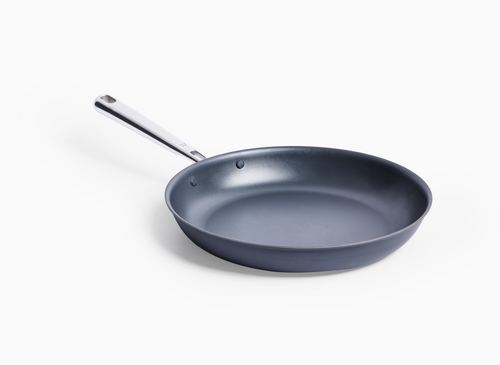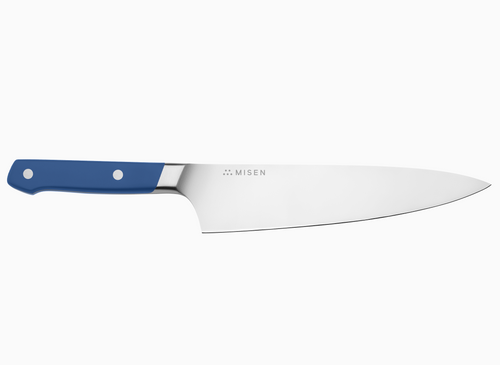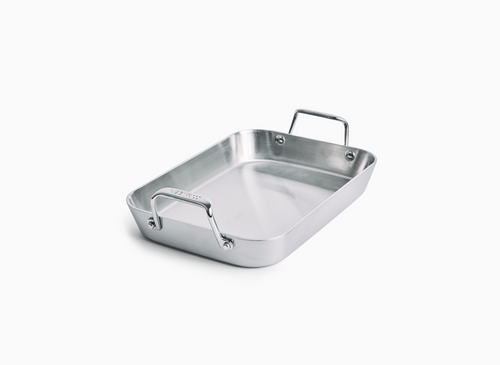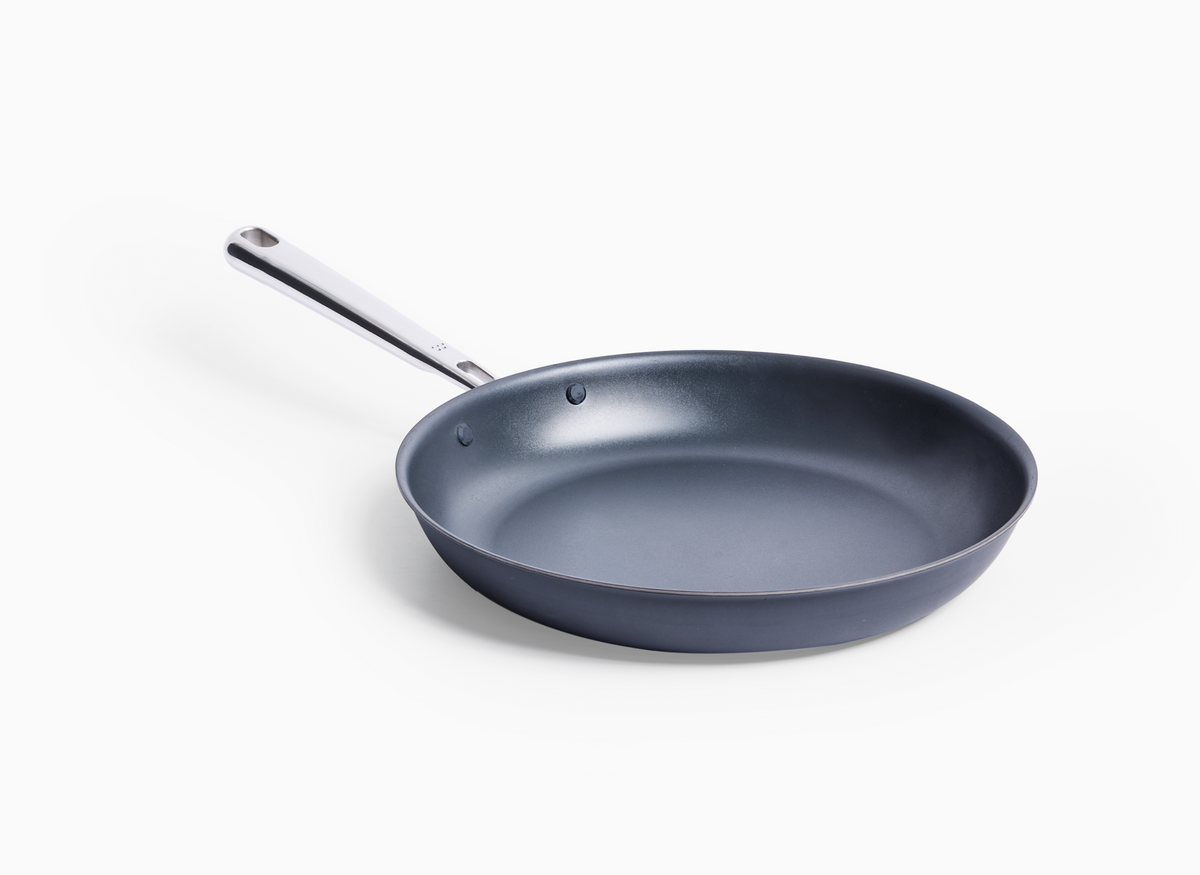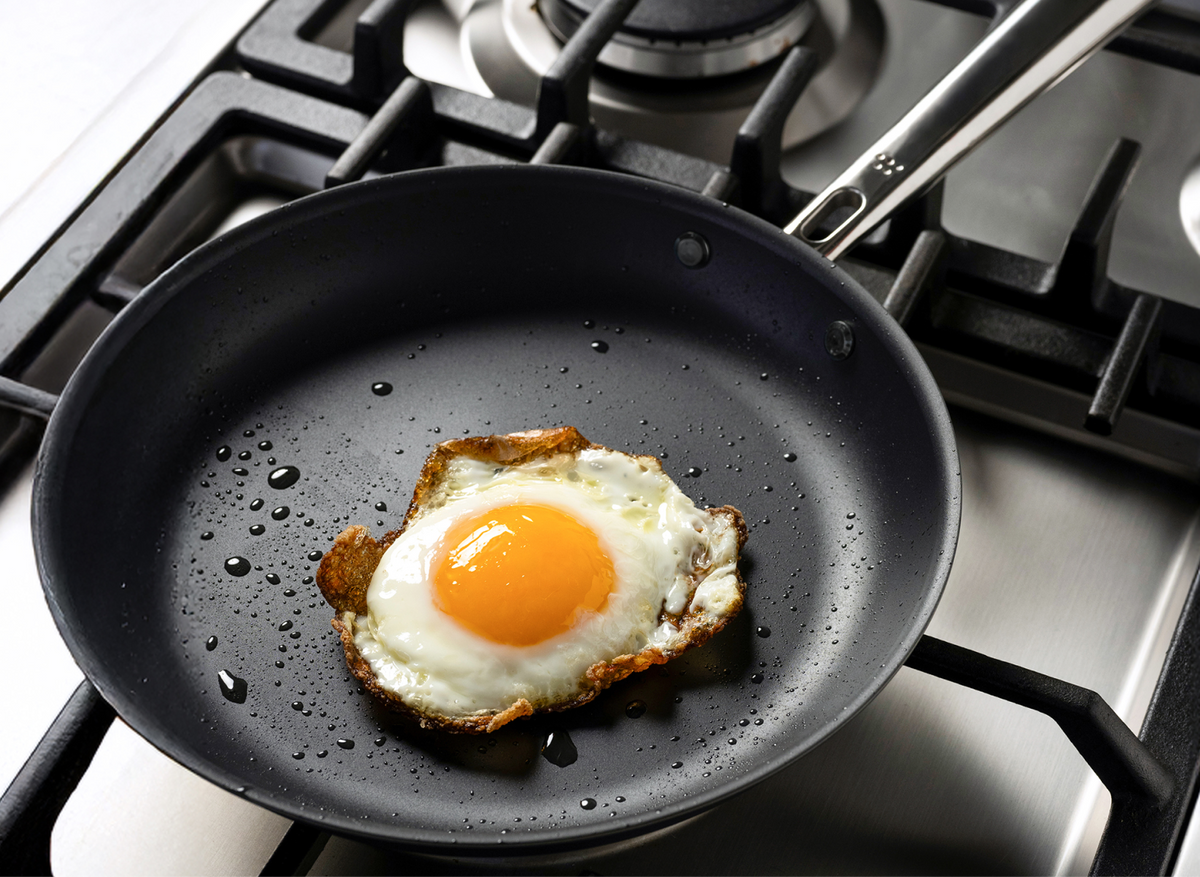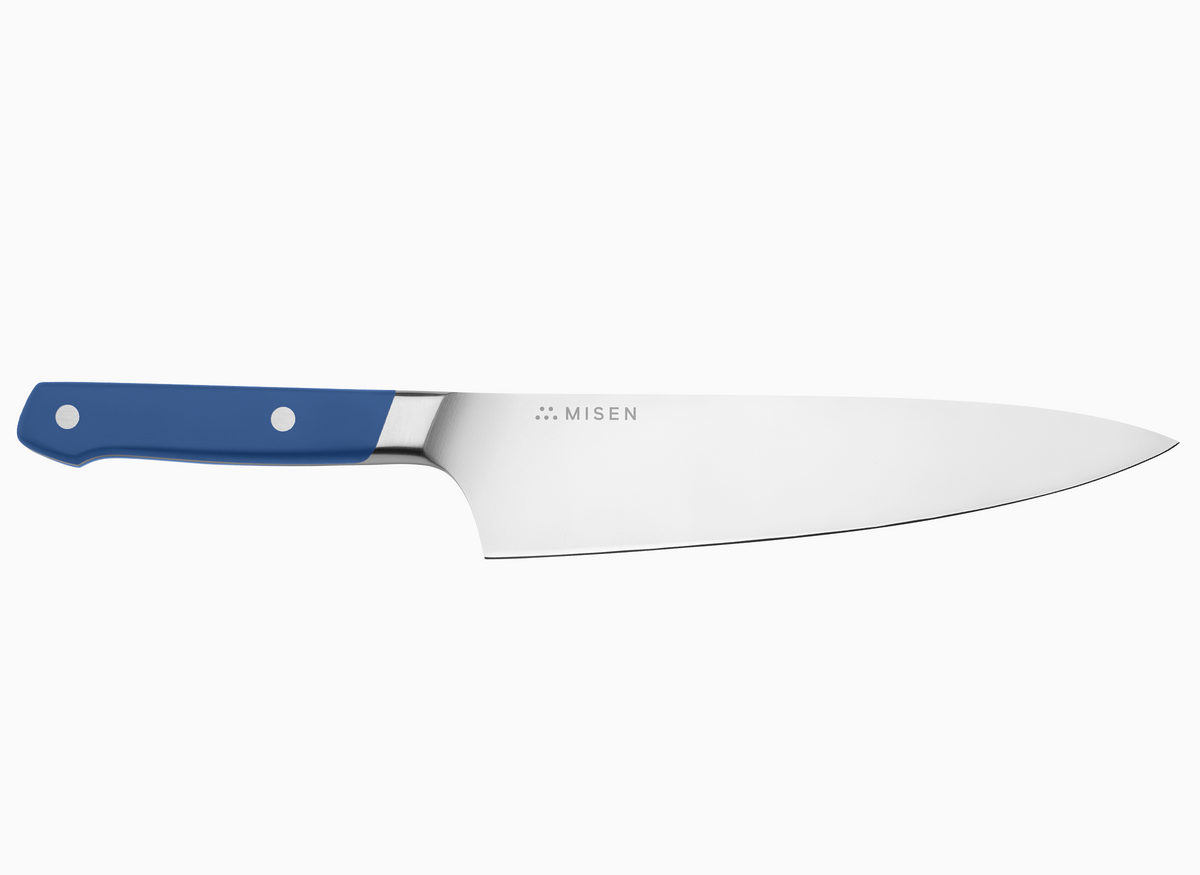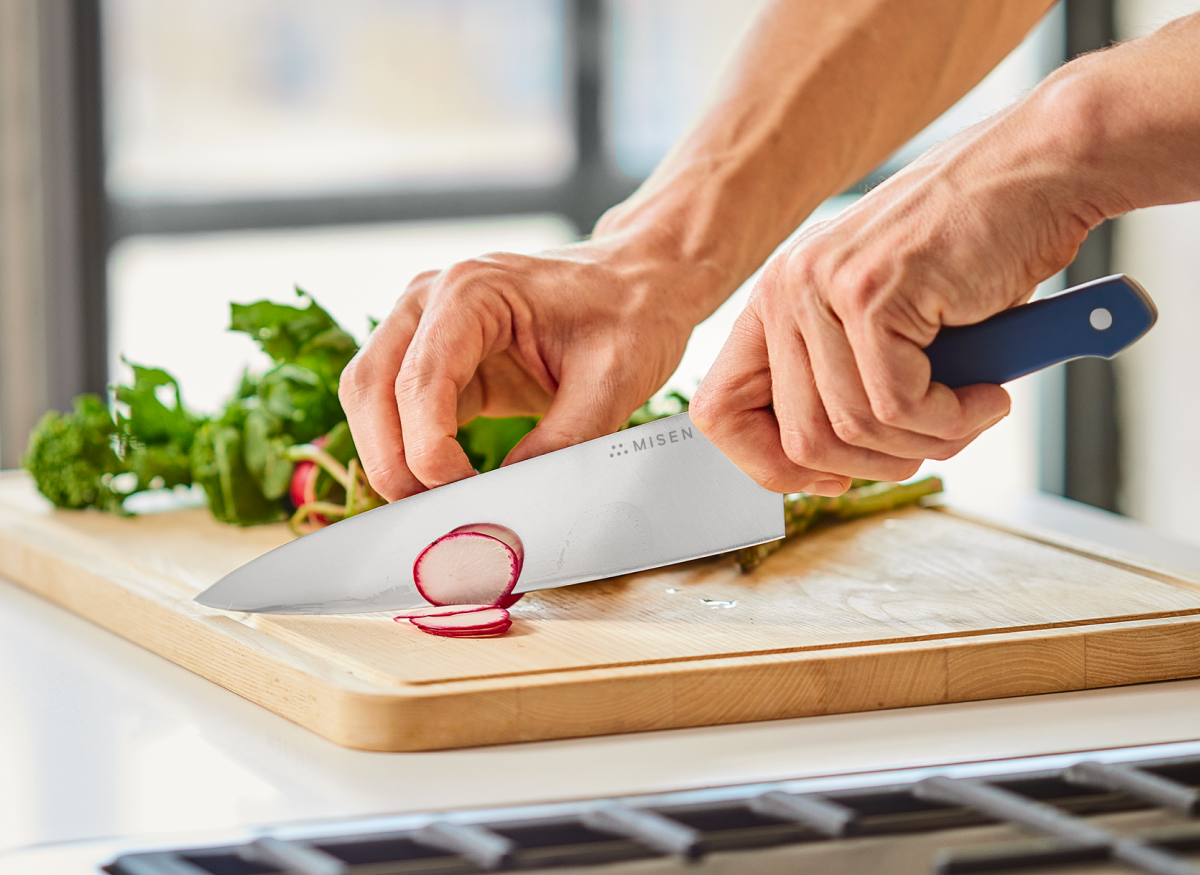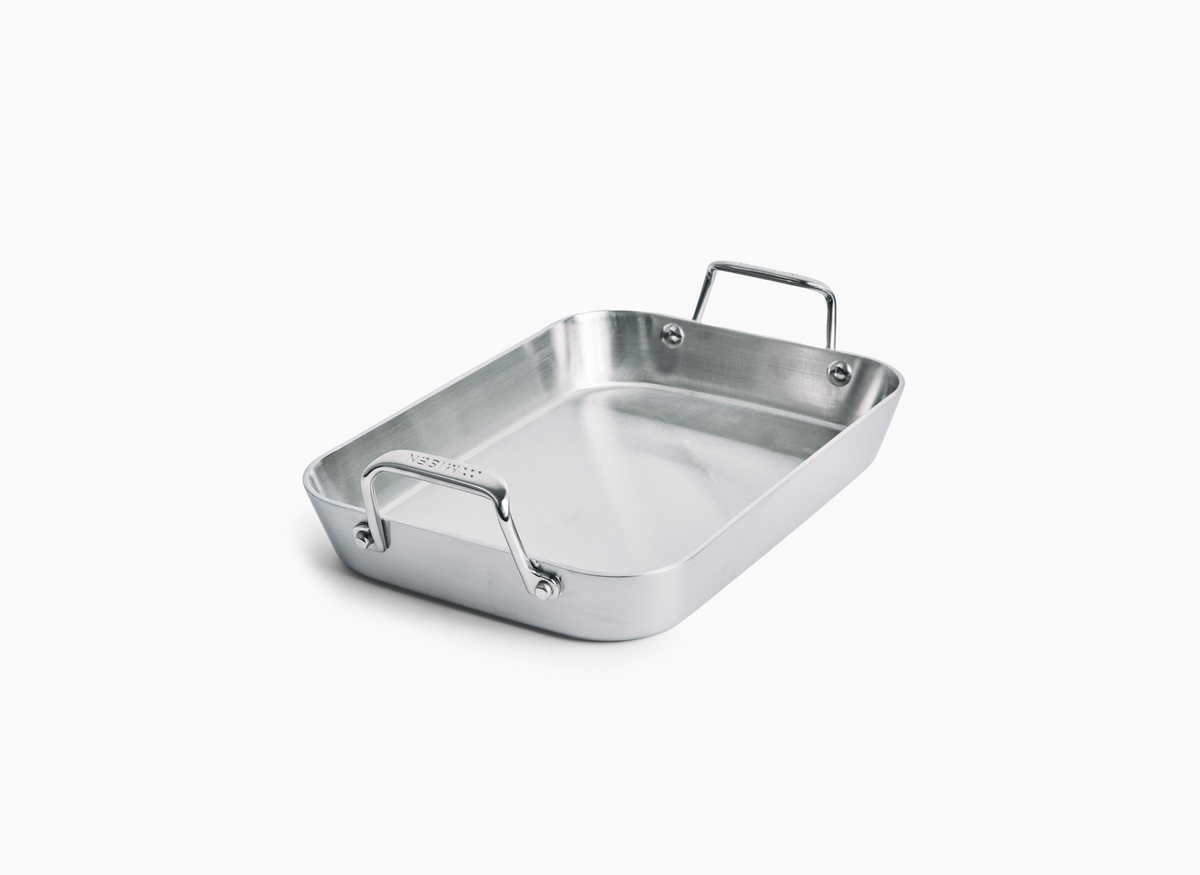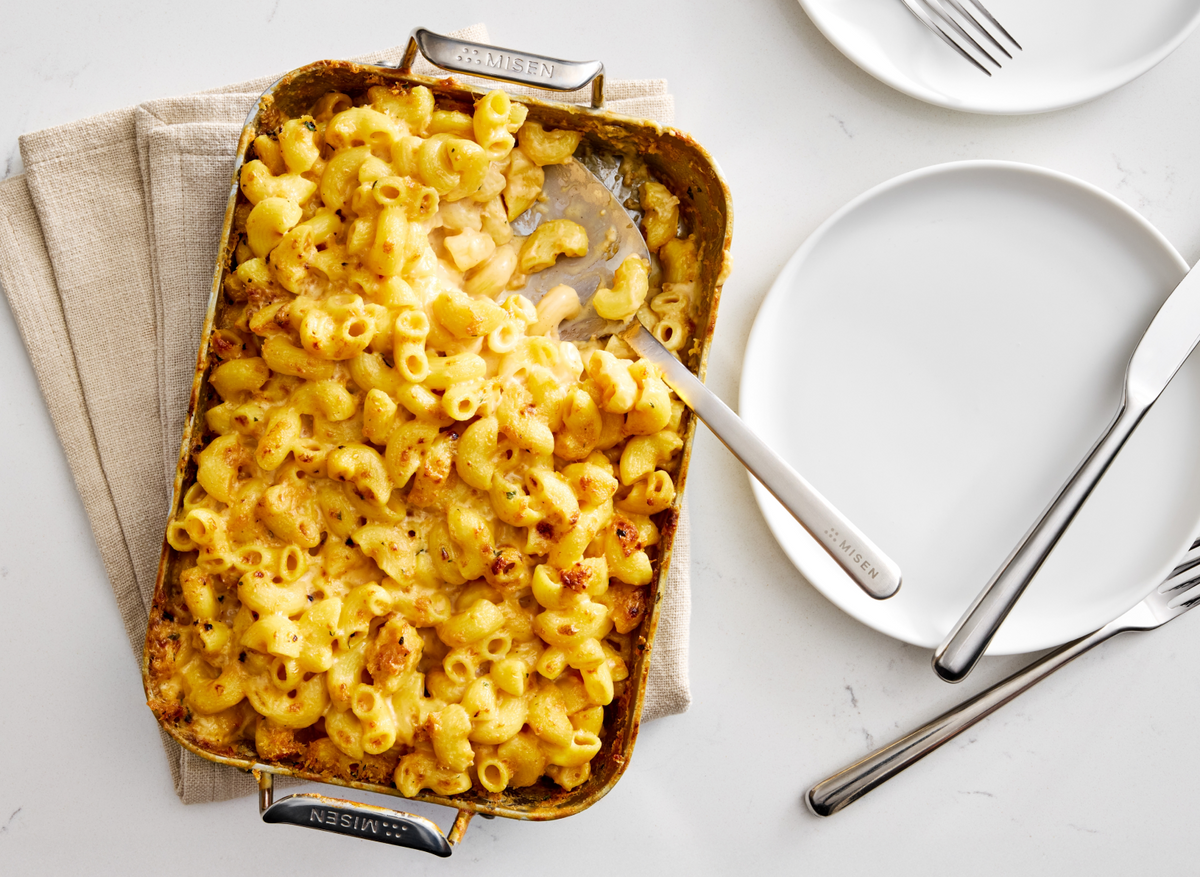Serving with a Chef Spoon: Presentation and Portion Control
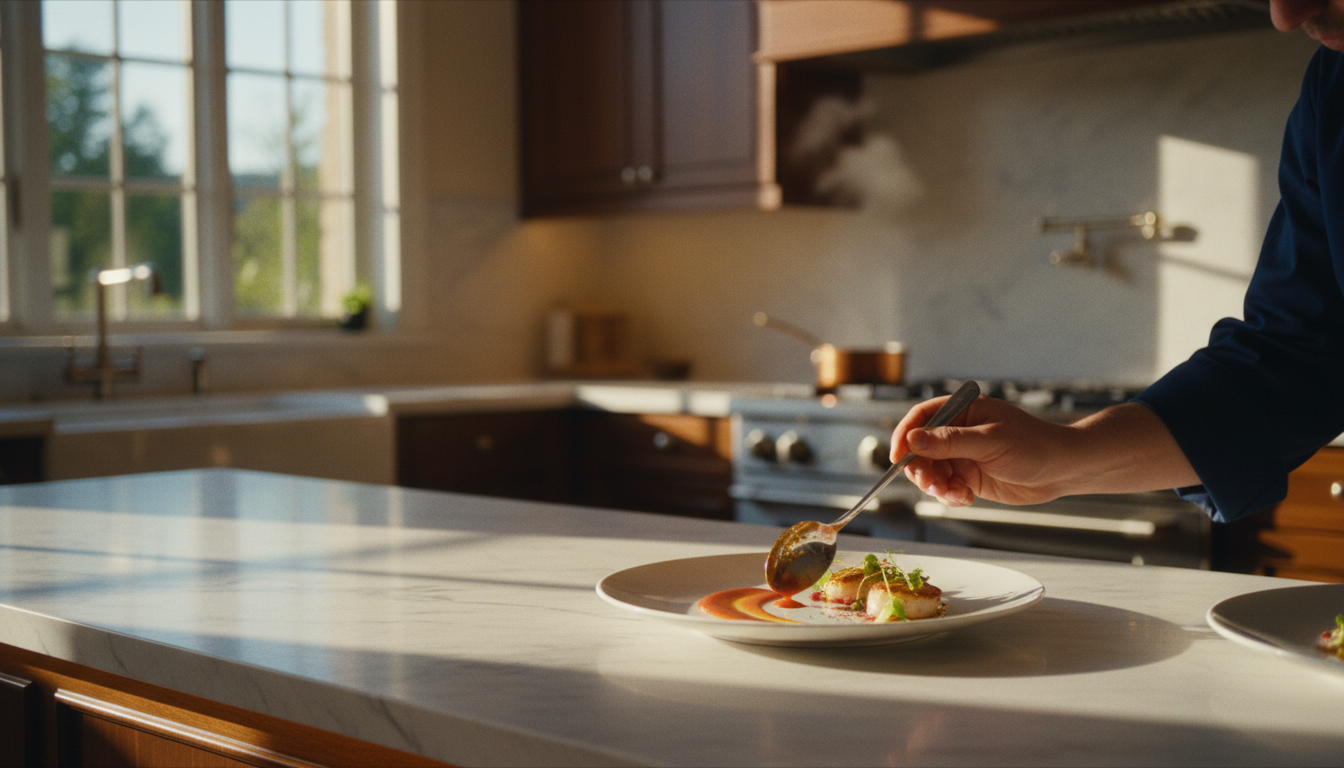
Selecting the Ideal Chef Spoon for Everyday Serving
Stainless steel provides exceptional durability and heat resistance, while quality wooden spoons offer natural antimicrobial properties when properly maintained.
Materials that Last: Stainless Steel vs Silicone vs Wood
Each chef spoon material brings something different to your kitchen. Stainless steel stands out for durability and heat resistance - look for 18/8 or 18/10 grades for the best quality and rust resistance. If you have nickel sensitivities, 18/0 grade works just as well. Wood offers natural antimicrobial properties and won't scratch your cookware, but needs a bit more care (we'll cover maintenance tips in detail later). Silicone handles heat up to 425°F and protects non-stick surfaces beautifully, though it's worth considering its environmental impact for everyday use. When picking wooden spoons, choose ones with natural finishes like beeswax or linseed oil over chemical sealants - your food will thank you.
Bowl Size & Shape for Precise Portion Control
The bowl shape and depth of your chef spoon makes all the difference for consistent serving. Deeper, rounder bowls hold more volume - perfect for hearty stews and generous sauce portions. Shallower bowls give you better control for precise plating and lighter dishes. For the most consistent portions, spoodles (spoon-ladle hybrids) are game-changers with their flat bottoms and straight handles that rest on container edges for perfect leveling. Think about what you cook most: wider bowls handle chunky ingredients beautifully, while narrower profiles give you more control with sauces and purees. The solid versus perforated choice matters too - perforated bowls drain excess liquid for more accurate portion weights, while solid bowls keep every drop of that delicious sauce.
Ergonomic Handles for Comfortable, Daily Use
A well-designed handle transforms your serving experience, especially during those marathon cooking sessions. Look for a slight curve in the handle - it naturally fits your grip and reduces hand fatigue when you're serving course after course. The best spoons feature unibody construction with no weak joints or seams. This seamless design not only lasts longer but also makes cleaning a breeze. For optimal control, aim for handles between 9-10 inches long. This length gives you the perfect balance and reach, whether you're portioning at the stove or plating at the counter. Quality handles distribute weight evenly throughout the spoon, which means less wrist strain and more precise control during repetitive serving.
Affordable Quality: Getting Value Without Overpaying
Quality chef spoons don't require breaking the bank - you just need to know what matters. Professional kitchens rely on spoons with specific features: a 2-3 tablespoon capacity for versatile portioning, balanced 9-inch handles for control, and thoughtful details like tapered edges for clean drizzling. When shopping, prioritize 18/8 or 18/10 grade stainless steel for durability that lasts years (or 18/0 if you're nickel-sensitive). The key is finding unibody construction - that seamless transition from handle to bowl that eliminates weak spots and makes cleaning effortless. A good chef spoon becomes an extension of your hand, helping you serve, sauce, and plate with confidence. Look for these fundamentals rather than fancy features, and you'll have a tool that performs beautifully without the premium price tag.
Mastering Portion Accuracy with a Chef Spoon
Professional kitchens use color-coded portion spoons and spoodles with straight handles for consistent serving sizes that ensure every guest gets their fair share.
Chef Spoon Serving Basics: Standardized Scoop Measurements
Understanding standardized measurements transforms your chef spoon into a precision tool. While a standard tablespoon holds 15ml and a teaspoon 5ml, the real game-changer for home cooks is discovering how chef spoons can deliver consistent portions every time [10]. You've probably noticed how restaurant meals always seem perfectly portioned - that's no accident. They're using spoodles, those clever hybrids that combine the best of spoons and ladles. The straight handle lets you level off portions by resting it on your pot's edge, taking the guesswork out of serving [10]. When choosing your serving spoon, think about what you cook most often. Love hearty stews? A deeper bowl is your friend. Prefer delicate sauces and precise plating? Go shallower. And here's a pro tip: skip the regular flatware for serving - their sizes vary wildly between sets, making portion control nearly impossible [10].
Using Portion Spoons for Consistent Servings
Once you understand the basics, putting them into practice becomes second nature. The beauty of standardized portion spoons lies in their simplicity - each size has its own color code, so you'll quickly memorize that gray means 4 ounces, just like professional kitchens do [12]. Need to drain excess liquid from vegetables before plating? That's where perforated spoons shine. Serving a rich sauce? Solid bowls keep every drop where it belongs [11]. The numbering system might seem confusing at first, but it's actually brilliant - a No. 8 scoop means eight scoops fill a quart container. Simple math that ensures everyone gets their fair share [12]. This systematic approach works just as well at home, helping you serve consistent portions whether you're feeding two or twenty [11].
Adjusting Portions for Diets and Family Sizes
Adapting portions for different family members doesn't have to be complicated. Whether you're managing a toddler's tiny appetite or a teenager's seemingly endless hunger, standardized chef spoons make it manageable. The 2-8 ounce range covers most serving needs - start with smaller portions for kids and work your way up [13]. If you're dealing with specific dietary needs, like diabetes management or weight goals, consistency becomes even more crucial. That's where tools like spoodles really earn their keep. Their straight handles let you level off exact portions against your pot's edge, removing the guesswork from "just a little bit more" [14]. For the most precision, pair your chef spoon with a kitchen scale - scoop, weigh, adjust, and soon you'll develop an intuitive sense for proper portions. Choose perforated spoons for vegetables that need draining, solid ones for sauces and grains [13]. Remember, it's not about restriction - it's about ensuring everyone gets exactly what they need [14].
Quick Visual Checks to Avoid Over‑Serving
Your eyes can be surprisingly accurate portion guides when you know what to look for. Think of your hand as a built-in measuring tool - your palm equals about 3-4 ounces of protein, perfect for that chicken breast or fish fillet. A closed fist? That's roughly a cup of rice or pasta. And that thumb tip represents a tablespoon of butter or oil [15]. Want to plate like a pro? Try the visual plate method: fill half with colorful vegetables, one quarter with protein, and the final quarter with grains or starches. It's an easy framework that creates balanced, beautiful meals every time [15]. These visual cues become second nature with practice, and they're especially helpful when cooking for others or trying to maintain consistent portions. Your chef spoon becomes an extension of these visual guides, helping you translate what you see into precise, consistent servings that look as good as they taste.
Elevating Presentation Through Chef Spoon Techniques
Maintaining a 45-degree angle with your chef spoon creates clean swooshes and precise dollops that guide the eye across the plate like a culinary artist.
Consistent Scoop Angles for Clean Plating
Consistent scoop angles create visual harmony and enhance portion control during plating. When using a chef spoon, maintain a 45-degree angle to achieve clean, precise swooshes and dollops that guide the eye across the plate [16]. For saucing, treat your spoon like a paintbrush, using controlled movements to create intentional lines and dots that unify different elements rather than randomly placing components [17]. The angle of your scoop also affects portion precision - hold the spoon at a steady angle when portioning to ensure consistent amounts and avoid overcrowding that can distract from the main elements [16]. Create clear spacing between components by using your spoon's natural curve to frame each element with deliberate negative space - this simple technique instantly makes any plate look more polished. When building height, use the spoon's edge to create structural support, stacking or leaning components at complementary angles that draw the eye upward without making the plate feel precarious [18].
Pairing Spoon Styles with Dish Types (soups, salads, sauces)
Different spoon styles excel at serving specific dish types. For soups, a ladle with a curved handle and deep bowl provides controlled pouring through its side lips, making it ideal for serving liquid-heavy dishes in 4-8 ounce portions [19]. Salad spoons feature large, shallow bowls that prevent crushing delicate ingredients like lettuce and tomatoes, with options in wood, plastic, or stainless steel for different dining settings [19]. When serving sauces, a chef spoon with an oversized 2.5 tablespoon capacity and slightly pointed tip enables precise drizzling and controlled basting. The shallow bowl design allows for creating decorative sauce presentations while maintaining control. For rice service, specialized flat-bowled rice spoons prevent grain crushing and enable clean presentation of perfectly formed mounds [19]. Portion spoons come in both solid and perforated varieties - the perforated style allows excess liquid to drain before serving, while solid bowls excel at retaining sauces and denser foods [19].
Simple Garnish Placement Using the Spoon's Edge
The edge of a chef spoon offers precision and control for placing delicate garnishes that enhance both visual appeal and flavor. Use the spoon's curved edge to create intentional negative space between components, allowing each element to stand out while maintaining a unified composition [21]. For optimal garnish placement, treat the spoon like a paintbrush, using controlled movements to position herbs, microgreens, and edible flowers that echo ingredients already present in the dish rather than adding disconnected decorative elements [21]. The spoon's edge helps maintain a clean buffer zone of approximately 1/2 inch from the plate's rim, preventing garnishes from appearing scattered or haphazard [21]. When working with delicate items, small serving spoons provide better control than tongs, allowing for precise placement that respects the integrity of fragile garnishes while contributing to the plate's overall visual harmony [21].
Creating Restaurant‑Quality Looks at Home
Creating restaurant-quality presentations at home is simpler than you might think. Treat your plate like a canvas, using the rule of thirds to guide placement - divide the plate into a 3x3 grid and position key elements along those lines rather than centering everything [22]. Create intentional height and dimension by strategically stacking components, but avoid precarious towers that could collapse before reaching the table [23]. Set yourself up for success by having all components ready and at the right temperature before you start plating - this small prep step makes all the difference [23]. Use the back of your chef spoon to apply sauces with confidence, creating clean shapes that enhance rather than overwhelm your dish [23]. Remember that the best garnishes are ones you can actually eat - skip purely decorative elements and choose herbs or microgreens that complement your dish's flavors [23]. Take a final look from the diner's perspective before serving, ensuring the plate appears balanced and intentional from all angles [23].
Practical Chef Spoon Serving Tips for Everyday Meals
A quality chef spoon becomes your kitchen multitool, seamlessly transitioning from basting to plating with its thoughtfully designed tip and balanced weight.
One‑Spoon Workflow: From Pot to Plate Efficiently
A smooth kitchen workflow starts with smart organization - having everything ready before you begin cooking. Arrange your workspace so ingredients and tools are within easy reach, creating a natural flow that works with your dominant hand. Group similar ingredients together and prep them in batches to save time and reduce back-and-forth trips. Keep essential tools like your chef spoon and clean tasting spoons nearby but off your main prep area. When it's time to serve, gather what you need in one trip rather than making multiple walks to the pantry. Take a moment between tasks to wipe down surfaces and reset your station - this small habit keeps you organized and prevents that frantic feeling during busy mealtimes.
Multi‑Tasking: Basting, Drizzling, and Scooping with One Tool
A quality chef spoon becomes your kitchen multitool, handling everything from basting to plating with one versatile implement. As covered in our section on pairing spoons with dishes, the right chef spoon excels at multiple tasks - its deep bowl holds enough liquid for effective basting while the tapered edge provides control for precise drizzling. The Misen Plating Chef Spoon exemplifies this versatility with its thoughtfully designed tip that transitions seamlessly from saucing to serving. The balanced weight and 8-9 inch length keep your hands safely away from heat while providing the reach you need for everything from stirring risotto to basting a roast chicken.
Maintaining Hygiene While Serving Different Foods
Maintaining proper hygiene while serving requires a simple but crucial system. Always use the two-spoon method: one spoon to scoop from the pot, another clean spoon for tasting. Transfer food between spoons without letting them touch - this prevents any contamination from reaching your serving dishes. Keep a container of clean tasting spoons at your station and another for used ones. Send dirty spoons straight to the dishwasher rather than letting them sit in sanitizer that might not be effective. Never taste with your fingers or reuse the same spoon - these habits can spread bacteria that cause foodborne illness. During busy meal prep, resist shortcuts like touching your face or phone between tasks without washing your hands. These simple practices protect your family and guests while becoming second nature with regular use.
Adapting the Spoon for Casual and Formal Settings
Your chef spoon works beautifully in any dining situation, from weeknight dinners to special occasions. For formal gatherings, rest your spoon on the plate's edge between bites, positioning the handle at an angle to show you're still eating. During casual family meals, keep things relaxed but still place utensils on the plate rather than directly on the table - it's a small habit that keeps things tidy. The beauty of a quality chef spoon is how it elevates any meal: use controlled, graceful movements when plating for guests, or go for a more relaxed approach when serving family-style. Either way, avoid clanking the spoon against dishes or teeth - good habits translate across all settings and make every meal feel a bit more special.
Caring for Your Chef Spoon to Extend Its Life
Simple care routines like proper washing and regular oiling can extend your chef spoon's life by years while maintaining its performance and appearance.
Safe Cleaning Methods for Different Materials
Taking care of your chef spoon doesn't have to be complicated - just match your cleaning method to your material. For stainless steel (like the durable kitchen tools from Misen), simply wash with hot soapy water and skip the steel wool to avoid scratches [33]. Got wooden spoons? They're a bit more particular - hand wash with unscented soap and dry right away. The dishwasher is their enemy, as soaking leads to warping and cracks [34].
Here's a pro tip: treat your wooden spoons to a spa day every few weeks. Rub in some food-grade mineral oil before bed and let it soak overnight - they'll thank you with years of reliable service [34]. Need to sanitize? A quick wipe with diluted vinegar does the trick, or you can briefly boil them for 2-5 minutes (but always oil afterward) [35]. Silicone spoons? Check what the manufacturer says, though hand washing never hurts [33].
Polishing and Restoring Shine Without Harsh Chemicals
Want to restore that like-new shine without harsh chemicals? We've got you covered. For wooden spoons showing their age, grab some sandpaper and work from coarse to fine grit, always following the wood grain. Once smooth, flood the surface with mineral oil (or walnut oil if you're feeling fancy) and let it drink it up before buffing to a soft glow [36].
Stainless steel looking a bit dull? Here's a kitchen chemistry trick that actually works: line a bowl with aluminum foil, add 1 cup boiling water, 1 tablespoon each of baking soda and salt, plus 1/2 cup white vinegar. Drop your spoons in and watch the tarnish disappear - it's oddly satisfying [37]. A quick buff with a microfiber cloth brings back that mirror finish. No scrubbing required, and your spoons stay chemical-free.
Proper Storage to Keep Shape and Prevent Damage
Smart storage keeps your spoons in top shape for years. The golden rule? Location matters. Keep wooden spoons away from your stove's heat and that sunny windowsill - they prefer cool, dry spots with good airflow [38].
Skip the jumbled drawer approach (we've all been there). Instead, try mounting a container on your cabinet exterior or investing in drawer dividers - your spoons won't get dinged up from constant shuffling [39]. Magnetic strips and pegboards aren't just for knives - they work great for metal spoons too, keeping them visible and scratch-free [39].
For wooden spoons, think vertical. Upright containers let air circulate and prevent moisture buildup that leads to funky smells [40]. Make inspection a habit - a quick check for cracks or rough spots while you're cooking means catching problems early. And when storing multiple tools together, give them some personal space with dividers or individual slots [39].
Sustainable Practices: Reducing Waste with Durable Tools
Choosing quality tools isn't just good for your cooking - it's better for the planet too. Here's something to think about: a durable stainless steel spoon creates just 7 grams of CO2 over its lifetime, while disposable plastic versions rack up 597 grams [41]. That's a massive difference from one simple switch.
When building your sustainable kitchen arsenal, look for materials that last. Bamboo grows quickly without pesticides and naturally fights bacteria [42]. Stainless steel in 18/8 or 18/10 grade? That's a decades-long investment that keeps working while disposables pile up in landfills [43].
The best part? Quality tools create a full-circle solution. When they finally retire after years of service, metal tools can be recycled and wooden ones composted - no guilt required [43]. It's encouraging to see over half of home cooks now choosing reusable bamboo and metal options over disposables [41]. Every durable spoon you choose is a small vote for a more sustainable kitchen future.
Integrating Chef Spoon Serving into a Joyful Cooking Routine
Transform everyday serving into meaningful moments by making your chef spoon an extension of your creativity and care in the kitchen.
Building Confidence with Consistent Tools
Building confidence in the kitchen starts with the right tools. When you reach for the same well-designed chef spoon day after day, something wonderful happens - your movements become second nature. You'll find yourself instinctively knowing how much sauce to drizzle or how to create that perfect swoosh without overthinking it.
The secret isn't having dozens of gadgets cluttering your drawers. Professional chefs know that a few versatile, high-quality tools beat a kitchen full of single-use items every time. This minimalist approach lets you focus on what really matters - the joy of cooking itself.
Think of your chef spoon as an extension of your hand. With each use, you're building muscle memory that translates into smoother, more confident movements. As we've discussed in earlier sections about ergonomic design, the right spoon becomes almost invisible in your hand, allowing you to concentrate on creating memorable meals rather than fighting with your tools.
Teaching Kids Portion Control Using a Spoon
Getting kids involved in the kitchen creates lifelong healthy habits, and your trusty chef spoon becomes the perfect teaching tool. Transform portion learning into a game by letting them be the "restaurant chef" who serves the family.
Start with simple visual cues they'll remember. Show them how their palm equals a protein serving, or how their closed fist represents the right amount of rice or pasta. Make it hands-on by creating trail mix together - they'll love measuring out nuts, dried fruit, and chocolate chips while naturally learning about balanced portions.
Yogurt parfaits offer another fun opportunity. Hand them the spoon and let them layer ingredients, talking about how each layer contributes to a balanced snack. They'll feel proud creating something beautiful while absorbing important lessons about portion sizes.
The key is keeping it playful. Use colorful portion spoons with clear markings, and praise their efforts at being the family's "portion expert." Before you know it, they'll be confidently serving themselves appropriate amounts - a skill that serves them well into adulthood.
Pairing the Spoon with Other Misen Essentials for a Cohesive Kitchen
Your chef spoon works best when paired with complementary tools that share the same commitment to quality and versatility. The Misen plating chef spoon, with its gently tapered tip and perfectly balanced 8.7-inch length, becomes even more powerful alongside other well-chosen essentials.
Its 2.1-inch width and 3.9-ounce weight hit that sweet spot - substantial enough for control, light enough for delicate work. Whether you're saucing a perfectly seared steak, basting roasted vegetables, or simply serving Tuesday night's pasta, this spoon handles it all with grace.
What makes a cohesive kitchen toolkit? Think about how each piece supports the others. Your plating spoon's precision tip creates those restaurant-worthy swooshes, while its deep bowl handles practical everyday serving. Pair it with a sharp chef's knife, a reliable cutting board, and quality cookware, and you've got everything needed for confident, joyful cooking. It's not about having every gadget - it's about choosing versatile tools that work together seamlessly.
Celebrating Everyday Meals: Making Service Part of the Experience
There's something special about the moment you bring a beautifully plated meal to the table. It's more than just food - it's an expression of care, creativity, and connection. Your chef spoon becomes the bridge between cooking and serving, transforming everyday dinners into memorable experiences.
Think about how you present each plate. As we explored in the presentation section, using the rule of thirds creates visual interest that makes even weeknight pasta feel special. But beyond technique, it's about the ritual itself - the deliberate movements, the careful attention to detail, the pride in presenting something you've created.
The beauty lies in consistency meeting creativity. Each time you pick up that familiar spoon, you're not just serving food - you're creating moments. Whether it's a careful drizzle of sauce that catches the light just right, or the way you position that final garnish, these small acts of intention elevate the entire dining experience.
Make serving part of the joy. Let family members see the care you put into each plate. Involve them in the process. Soon, you'll find that the act of serving becomes as fulfilling as the cooking itself, turning every meal into a small celebration of togetherness.
- Choose chef spoons made from quality materials like 18/8 or 18/10 stainless steel for durability, or natural wood with beeswax finish for gentle cookware protection
- Spoodles with straight handles and flat bottoms enable precise portion control by leveling against pot edges, while color-coded systems ensure consistent serving sizes
- Master the 45-degree angle technique for clean swooshes and use your spoon's curve to create intentional negative space that elevates plating presentation
- Implement the two-spoon method for hygiene - one for scooping, one for tasting - and never let them touch to prevent cross-contamination
- Maintain wooden spoons with regular mineral oil treatments and hand washing, while stainless steel needs only hot soapy water and gentle cleaning
- A single quality chef spoon can handle multiple tasks from basting to precise plating, reducing kitchen clutter while improving cooking confidence
- Choose durable tools over disposables - a stainless steel spoon produces just 7 grams of CO2 over its lifetime compared to 597 grams from plastic alternatives
- 1. https://www.bobsredmill.com/articles/wood-vs-stainless-steel-utensils
- 2. https://letsgogreen.com/blog/non-toxic-cooking-utensils/
- 3. https://www.innaturepack.com/sizes-of-spoons-a-comprehensive-guide-to-types-and-measurements/
- 4. https://chefequipment.com/blogs/resources/measuring-and-portion-control-tools-for-foodservice?srsltid=AfmBOoqE7BsI35rHyOzCXLU-YXo1jB2UubGeQfnd-uoAfP-BOkS7EZfv
- 5. https://www.techefusa.com/product-page/chefcore-stainless-steel-cooking-spoon?srsltid=AfmBOopxD0kU3bSowD64_vN3FGD--z_gqwfcJxFgAX5rS0KWeXXem_Sx
- 6. https://www.restaurantsupply.com/products/bon-chef-s504-9-19-inch-serving-spoon-with-ergonomic-handle-stainless-steel?srsltid=AfmBOopfPEvWwRXUi_KM5XviPDbpyf60RDoT7MH-RDZpFR6gx17zEEQy
- 7. https://www.nytimes.com/wirecutter/reviews/gray-kunz-sauce-spoon-review/
- 8. https://nymag.com/strategist/article/gestura-stainless-steel-spoon-review.html
- 9. https://www.thespruceeats.com/best-cooking-utensils-to-buy-4110334
- 10. https://chefequipment.com/collections/portion-control-tools?srsltid=AfmBOoorO5zvko-pCRZB-vAWe0pfBOpUx8njCVjBLuwybXRUXPDD7SvT
- 11. https://www.vollrathfoodservice.com/culinary-experience-inspiration/vollrath-food-service-blog/portion-control-chart
- 12. https://www.restaurantware.com/blogs/smallwares/portion-scoops-buying-guide?srsltid=AfmBOoqXckAZIWWDWvRIDs5HgUcgX2ChZQQLjoWjBVypLbvIrzOwdALA
- 13. https://gatorchef.com/collections/portion-control-spoons-and-dishers?srsltid=AfmBOor3zHk5jhz4taA4POdpKMjKzmRhK3PxCReTqom3Lg83Q-eq-WK7
- 14. https://www.yahoo.com/lifestyle/health/nutrition/article/portion-control-154959509.html
- 15. https://www.restaurantowner.com/public/Portion-Controls-Every-Restaurant-Should-Be-Using.cfm
- 16. https://www.unileverfoodsolutions.us/chef-training/food-service-and-hospitality-marketing/food-photography-and-food-plating-tips-and-techniques/top-10-food-plating-tips.html
- 17. https://resdiary.com/blog/food-presentation-and-plating-techniques
- 18. https://pos.toasttab.com/blog/on-the-line/how-to-plate-food-like-a-chef?srsltid=AfmBOop-EyJ_UjPYoUuCEWWV9IB7oDQSBh1hx265FJ7zrvAVa3q6n1CT
- 19. https://www.webstaurantstore.com/guide/1008/types-of-spoons.html?srsltid=AfmBOopVdYPt9Zvif8rTwFRMs7WYunLtCOWZRFBUmJidt9tCGtw5gqvj
- 20. https://www.seriouseats.com/sauce-spoon-review-7500742
- 21. https://www.theculinarypro.com/plate-presentations
- 22. https://www.webstaurantstore.com/article/200/basic-guide-to-food-presentation.html?srsltid=AfmBOooIAGTngRcDfBAOXCCan0pL00HoHLTnT603EJj-3vrcJprf55tv
- 23. https://www.touchbistro.com/blog/food-plating-techniques-for-restaurants/
- 24. https://www.theculinarypro.com/mise-en-place-savory
- 25. https://www.reddit.com/r/Chefs/comments/fnvxrk/how_do_i_improve_my_overall_workflow_productivity/
- 26. https://www.bonappetit.com/story/kunz-spoon?srsltid=AfmBOoowwhSLwLDKrfQH4aCswPf_yvk7bclT-J0PulF7Zj2p5kB9vEpS
- 27. https://www.quora.com/What-do-you-use-a-basting-spoon-for
- 28. https://www.chefscloset.com/blog/the-tasting-spoon-controversy/?srsltid=AfmBOor3mKon1fz11kLNCAnn0TqyLRdjTCx5xR4xaI3KoAVPn4NAJSKc
- 29. https://creators.yahoo.com/lifestyle/story/chefs-use-a-two-spoon-method-when-tasting-a-dish-they-are-preparing-it-couldnt-be-more-simple-134251367.html
- 30. https://sylviaaconsultancy.co.uk/double-dipping-and-food-hygiene-for-chefs/
- 31. https://whatscookingamerica.net/menu/diningetiquetteguide.htm
- 32. https://www.culinaryartsswitzerland.com/en/news/dining-etiquette/
- 33. https://www.escoffieronline.com/proper-ways-to-clean-your-kitchen-utensils/
- 34. https://www.nytimes.com/wirecutter/reviews/how-to-clean-wooden-spoon/
- 35. https://aarven.com/en-us/blogs/artisans/caring-for-your-wooden-kitchen-utensils?srsltid=AfmBOooHUIhwayM94oeTkWBm23UwtZ9rSho5e3M8lp8N7xXZKOcxFMCJ
- 36. https://food52.com/story/16189-the-best-oils-techniques-for-finishing-wooden-kitchen-tools
- 37. https://cleanmyspace.com/the-besk-kept-silver-cleaning-secret-ever/
- 38. https://tuuli-shop.com/en-ca/blogs/news/how-to-clean-wooden-spoons-utensils?srsltid=AfmBOoqbsS7H6sA7KL2BowJHhJFIgE8VyWTArn6HbMChzIzLW6x_LvMn
- 39. https://www.thekitchn.com/11-smart-ways-to-organize-your-cooking-utensils-248374
- 40. https://hollandbowlmill.com/the-basics-of-protecting-your-wooden-utensils/?srsltid=AfmBOoodfQKNMMi_4h-IwlDVWGI-g3Nb0IcWWxHAXot85Tz2-DGkcMjN
- 41. https://greenworkscutlery.com/blog-news-13047/choosing-reusable-spoons-a-guide-for-eco-friendly-cooks-11947162.html
- 42. https://hollandbowlmill.com/5-best-eco-friendly-wooden-spoons-for-cooking/?srsltid=AfmBOoqXhTLlhUraqv5JDYTFCa_sdHREOhAuMaddL912Zkt-hMK6lxp8
- 43. https://hardwoodchef.com/blogs/blog/the-role-of-sustainable-practices-in-crafting-kitchenware?srsltid=AfmBOophgny1WXuafRKfrBaD94P1B5jmcAx_HYw7l_FNWQT0X0YykxCg
- 44. https://www.bonappetit.com/story/andy-baraghani-cooking-tools?srsltid=AfmBOop5S-DLbCRpwRSGE2nCQ-cAhg0ivQ8AFqEZMzwxwumZyVX4J0-4
- 45. https://www.seriouseats.com/pro-cooking-equipment-for-home-kitchens
- 46. https://www.instacart.com/company/ideas/cooking-activities-for-kids/
- 47. https://www.massgeneral.org/children/nutrition/tips-for-proper-portion-control
- 48. https://misen.com/products/plating-chef-spoon?srsltid=AfmBOooO2w1FkpW9G1K7Vuxhb0q18cfwYXDk4YIHeaxiiHB1fm574yUq
- 49. https://www.amazon.com/Bonigour-Chef-Kunz-Spoons-Vintage-inspired/dp/B0FCSFTJSN
- 50. https://www.solidteknics.com/kitchentools/chefspoonstainless?srsltid=AfmBOoq2bHF1cXjl75NbAoq3lbamT97KZWaNkbLGy5nnzzotwb3RsWad
- 51. https://www.parisgourmet.com/blog/what-every-professional-kitchen-needs
